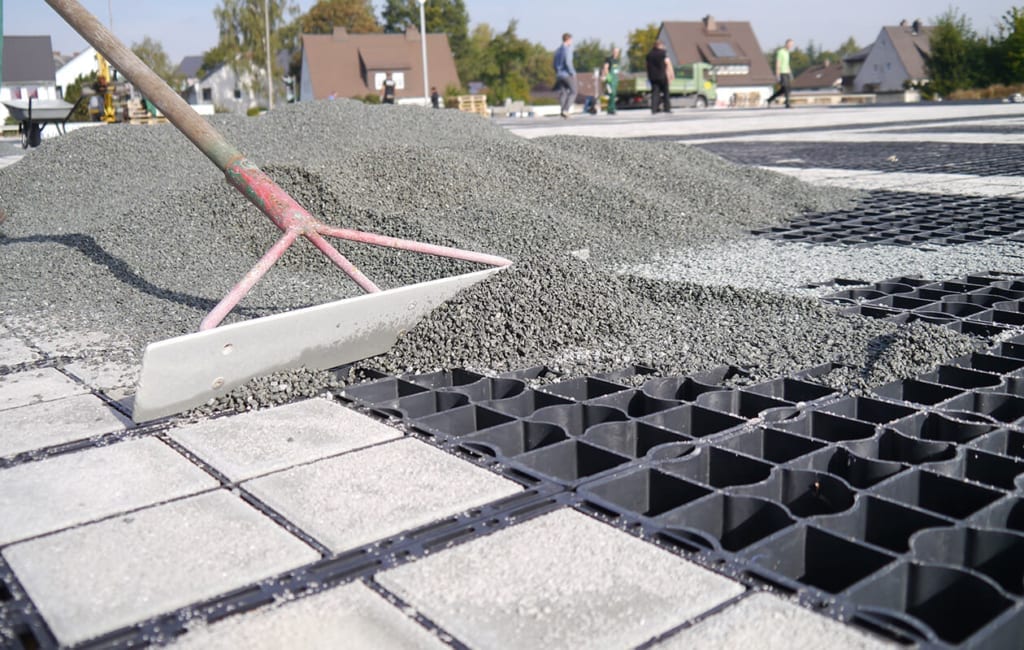Permeable Paving, By the Numbers
Many of us approach issues from an emotional standpoint. Others approach things from a more analytical or technical direction.
Issues such as climate change can be approached in both manners. Emotionally, we are motivated to change our ways and the ways of others around us to ensure we not only stop our harmful and destructive ways, but that we also do what we can to reverse the affects of climate change, ensuring the earth remains healthy for our children and grandchildren.
For many of us, this is enough, but for others, tangible and numerical proof is required for further motivation and subsequent actions.
In light of changing weather patterns and the increasing frequency and strength of rain events due strongly in part to the effects of climate change, steps are being taken to include green infrastructure and low impact development (LID) into designs and projects in Toronto and across Canada.
Let’s take a moment and explore the advantages of sustainable permeable paving solutions, one type of LID technology, by the numbers.
Permeable paving can be used for effective and efficient, in regards to both land usage and budget, stormwater management. Using permeable paving systems, including permeable pavers, blocks, and grids, in lieu of conventional solid surfaces for parking, driving, vehicular access, pathways, and ground reinforcement allows for the management of stormwater beneath the surface, effectively multi-tasking the land.
Often, one of the initial hesitations towards using new, greener, and eco-friendly alternatives is the misconception that they are more expensive, harder to install, harder to maintain, and not as resilient as conventional and traditional products.

Let’s explore further.
Sustainable systems such as the Ecoraster permeable paver grids are actually cost competitive, and is less expensive than conventional surfaces, especially when discussing larger commercial and industrial projects. For projects with residential applications, the pricing of permeable pavement is cost competitive to products such as stamped concrete and interlocking paving stones.
One of our clients independently formulated a spread sheet comparing the gravel filled permeable grid pavers to commercial grade asphalt for a 700,000 sq ft distribution center parking area, currently a green field. Using very conservative numbers, the client will save over $1 million initially by using Ecoraster in lieu of asphalt and alternative paving materials; over the course of 15 years, the client will save over $5 million.
Why you ask….
Installing permeable paving surfaces allows for a great reduction if not total elimination of conventional drainage infrastructure such as catch basins. The surface itself is cost competitive, if not less expensive than conventional solid surfaces such as concrete and asphalt. Additionally, there are reduced maintenance costs due to the fact there is no regular maintenance required – no resealing, no repainting of lines, and no vacuuming to retain porosity.
Long term, the porous surfaces are guaranteed for 20 years and will not develop cracks or potholes or require regrading.By virtue of the physics of the permeable surface, the winter salt requirements are greatly reduced if not fully eliminated, saving not only a tremendous amount of money, but reducing the salty runoff entering the lakes and natural water bodies.
Many of the clients with truly permeable surfaces have been able to leverage tax grants or incentives including municipal stormwater tax credits.
These are real numbers. These are real monetary savings which can not be discounted.
The LID Paving permeable surfaces can also be used when there are restrictions in projects on allowable base depth due to sub terrain infrastructure such as pipes and cables or when it is cost prohibitive to excavate large volumes of soil due to site location and/or cost of dumping. For these such projects and applications, the permeable paving surfaces provide not only the perfect solution but also help to save clients money as well as greatly reducing labor time, positively impacting the bottom line.

The “recycled” benefit of the Ecoraster paving grids, which have been used for over three decades world-wide can be easily tabulated as well, for the “number” people.
Each square foot of the plastic pavers is comprised of between 85-95 recycled plastic shopping bags. A 50,000 sq ft parking lot has kept 4,650,000 plastic bags from entering land fills and from polluting our lakes and natural water bodies. A recently installed 8,500 sq ft parking lot using Ecoraster Bloxx with recycled rubber pavers kept 807,500 bags and 8000 tires from landfills. These are very real numbers.
Our clients proudly promote the recycled aspect of their “paving”. They have found that Ecorasterpaving starts the “sustainability” discussion meaning that as soon as their clients step out of their cars onto the permeable surface, which is noticeably different, their interest in spiked. The conversation about the company’s commitment to sustainability starts with that first footstep in the parking lot. With more and more businesses motivated to openly promote their focus on sustainability, this is invaluable.
It is encouraging to learn about additional approaches that reward those taking steps towards including GI and LID, which will inevitably benefit everyone.
We would be happy to work with you to develop your “project-centered” calculation table.
We trust that you will be pleasantly surprised by the very real and very noticeable savings associated with the inclusion of our permeable paving surfaces.




